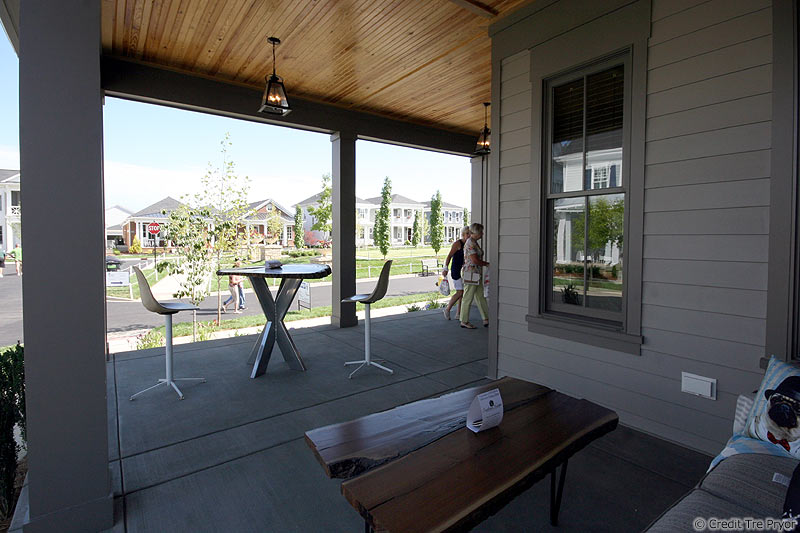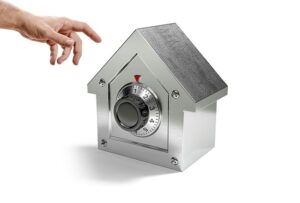Sidewalks, whether they are private or used for the public, need to be safe. The same goes for your porch and deck areas. If they’re slippery, someone is more likely to get hurt and no one wants that. In this piece, we’ll look at eight ways to improve concrete safety with slip resistance. See which one makes the most sense for you!

Safety should be a primary concern. Whether you are looking at a commercial space and the concrete sidewalks your customers will use or the walkway leading up to your home’s front door.
All concrete will crack over time. Sealers and coatings can protect the life of your concrete and they can also add slip-resistance. Let’s look at why this is important.
The Importance of Slip-resistant Sidewalks and Porches
Slippery porches and sidewalks bring problems. Expert resurfacers from Concrete Patio Indianapolis exist to help property owners maintain their driveways, sidewalks, and concrete patios. Companies like this offer services to homeowners who need help resurfacing their damaged private sidewalks and patio entrances.
If you think repairing your home’s concrete is too expensive it costs less than replacement. Also, consider the safety risks of not correcting a tripping hazard. Then while you’re at it, consider adding a slip-resistant treatment to further improve the usability of your outdoor concrete spaces.
8 Ways to Improve Concrete Safety with Slip Resistance
In this article, we will look at eight ways to improve concrete safety with slip resistance for your sidewalks and porches… and maybe even your driveway.
1. Textured Concrete
First up on our list is utilizing a rough texture on the concrete. Aside from applying coatings to add traction and reduce slipperiness, you can also utilize raw materials that produce a natural rough texture. Stamped concrete is a form of textured concrete. As a bonus, this also creates a decorative finish that most people find more attractive than plain concrete.
As you might imagine, adding texture enhances traction to help fight against slipping. Using rough textured floors like pavers, bare cement, and gravel-finished floors are excellent choices for sidewalks that are sloping.
2. Outdoor Mats and Coverings
Another method is using mats and rugs. Although these materials will sound much better for indoor usage, outdoors can also use these types of materials. This is especially true for high-traffic areas like porches.
So, what are these outdoor mats? They look like ordinary mats but are designed for outdoor use. Some are made from rubber which offers wonderful slip resistance. Others are made from various man-made fibers. The key is that they’re created specifically for outdoor use.
3. Anti-Slip Coatings
Another option is anti-slip coatings that can be applied over cemented surfaces, concrete, and pavers. The concrete coating has been given the sole purpose of enhancing the concrete sidewalks by increasing the traction so it can provide a non-slippery surface.
Concrete and anti-slip coatings go perfectly together, and several types are available. If you go to your local suppliers of concrete resurfacing materials, look for acrylic, epoxy, or polyurethane coatings, as these are some of the few common types of coatings often used for outdoor concrete.
4. Creating Gradual Slopes
If you are planning to install a new sidewalk or driveway, consider utilizing the slope to your advantage. Basically, you want to reduce steepness and improve concrete safety with slip resistance.
In certain situations, this would mean that you design the walkway to move a certain distance before adding a step, then repeating the process. This is what landscape designers call a terracing pattern.
5. Aggregate
Similar to textured concrete is aggregate. While textured concrete is primarily all concrete, aggregate is a combination of concrete and other materials like stone, glass, sand, or silica that automatically makes a texture. This natural texture helps create a more non-slip surface.
6. Non-Slip Sealants
Now that we had talked about additives and anti-slip coatings, we reached another special agent used to keep sidewalks safe. It is with non-slip sealants. Like the additives and coatings, sealants are applied on top of the material chosen for the outdoor floor.
Sealants are versatile and safe products that come in roll-on and spray types. These products normally contain sand, aluminum oxide, and polycarbonate compounds that produce powder-like grit when they touch a surface, making an anti-slip layer on top of the floor material. They are also great for porches with vinyl or laminate floorings.
7. Landscape Improvement
One last idea to improve concrete safety with slip resistance is through landscape improvement. When you have a well-maintained landscape, there’s less chance of debris coming onto your walkways and causing slipping or tripping.
First, make sure that any drainage systems along the sidewalks and porch areas are directing water away from the concrete. Providing proper drainage solutions is about keeping water and moisture collecting on the concrete surfaces.
8. Landscape Lighting
Lastly, if you want to reduce the likelihood of accidents on your concrete surfaces, make sure there is adequate lighting. After all, if you can’t see where you are going, there’s going to be a bigger chance for problems. Outdoor lighting also protects your home against criminals.
There are excellent ways to add good outdoor lights along the concrete sidewalks on your property. Many are simple the the DIY homeowner. But if it’s a bigger landscape lighting job that you’re looking for, consider hiring a professional local company.



